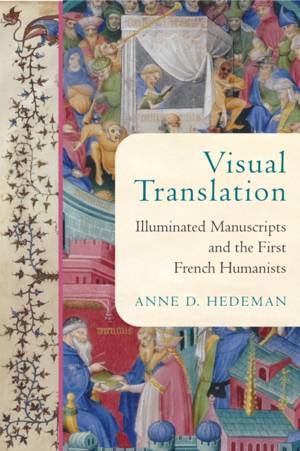
- Afhalen na 1 uur in een winkel met voorraad
- Gratis thuislevering in België vanaf € 30
- Ruim aanbod met 7 miljoen producten
- Afhalen na 1 uur in een winkel met voorraad
- Gratis thuislevering in België vanaf € 30
- Ruim aanbod met 7 miljoen producten
Omschrijving
Visual Translation breaks new ground in the study of French manuscripts, contributing to the fields of French humanism, textual translation, and the reception of the classical tradition in the first half of the fifteenth century.
While the prominence and quality of illustrations in French manuscripts have attracted attention, their images have rarely been studied systematically as components of humanist translation. Anne D. Hedeman fills this gap by studying the humanist book production closely supervised by Laurent de Premierfait and Jean Lebègue for courtly Parisian audiences in the first half of the fifteenth century.
Hedeman explores how visual translation works in a series of unusually densely illuminated manuscripts associated with Laurent and Lebègue circa 1404-54. These manuscripts cover both Latin texts, such as Statius's Thebiad and Achilleid, Terence's Comedies, and Sallust's Conspiracy of Cataline and Jurguthine War, and French translations of Cicero's De senectute, Boccaccio's De casibus virorum illustrium and Decameron, and Bruni's De bello Punico primo. Illuminations constitute a significant part of these manuscripts' textual apparatus, which helped shape access to and interpretation of the texts for a French audience. Hedeman considers them as a group and reveals Laurent's and Lebègue's growing understanding of visual rhetoric and its ability to visually translate texts originating in a culture removed in time or geography for medieval readers who sought to understand them. The book discusses what happens when the visual cycles so carefully devised in collaboration with libraries and artists by Laurent and Lebègue escaped their control in a process of normalization. With over 180 color images, this major reference book will appeal to students and scholars of French, comparative literature, art history, history of the book, and translation studies.
Specificaties
Betrokkenen
- Auteur(s):
- Uitgeverij:
Inhoud
- Aantal bladzijden:
- 394
- Taal:
- Engels
- Reeks:
Eigenschappen
- Productcode (EAN):
- 9780268202279
- Verschijningsdatum:
- 15/04/2022
- Uitvoering:
- Hardcover
- Formaat:
- Genaaid
- Afmetingen:
- 178 mm x 254 mm
- Gewicht:
- 1138 g

Alleen bij Standaard Boekhandel
Beoordelingen
We publiceren alleen reviews die voldoen aan de voorwaarden voor reviews. Bekijk onze voorwaarden voor reviews.











